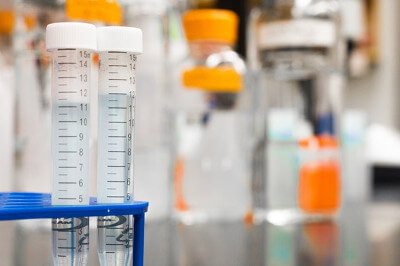
Lean Practices are becoming ubiquitous, and laboratories are no exception. Balances and their accessories are a staple of lab equipment, and their proper usage and placement can go a long way to make sure your lab follows Lean Lab Practices. In this post, we’ll explain Lean Lab Practices and give you a few tips that can help make sure you follow them.
What are 'lean lab practices'?
'Lean Practices' originated at Toyota for factory applications. They worked very well, and became adapted for various industries and settings, including laboratories. Basically, Lean Practices are a way of organizing a lab to maximize value by minimizing waste. Manufacturing and labs are quite different, so the practices were adapted and specialized. In CLPMag, Craig Foreback defines 5 goals (“the 5 S’s”) for Lean Lab Practices:
- Shitsuke (sustain). Respect rules; exercise self-discipline; maintain a stable workplace.
- Seiso (shine). Keep work area clean.
- Seiketsu (standardize). Create rules.
- Seiri (sort). Eliminate unneeded tools and supplies.
- Seiton (straighten). Orderliness; organize materials, tools, and documents.
In Lab Manager, Tom Reynolds and Tanya Scharton-Kersten explain that “mura (volatility) creates muda (waste)”.
In short, Lean Lab Practices are standardized processes designed to streamline laboratories in order to make work flow more efficient. They ensure that everything is in the proper place and that people do not get in each other’s way.

How do weighing instruments fit into Lean Lab Practices?
Weighing balances can be categorized as devices that make up a workspace. It’s important to figure out where the balance integrates into the lab’s processes. For example, if weighing the sample is on top of the list of things to do for that work day, the balance should be easily accessible and ideally, the beginning of a path throughout the lab that follows the step of the process. After weighing the sample, if the next task is to put the sample under a microscope, there should be a quick, short path to the microscope workstation.
It’s also about maintaining and optimizing the workspace. The balance should be kept clean and calibrated frequently. It should not be moved. If accessories are used with the balance, they should be accessible without impeding in other people’s space so if they choose to weigh something without the accessories or add their own, they don’t have to clean up someone else’s clutter first. If the sample has to be prepared beforehand (ground up or cleaned, for example), this should not prevent other people from accessing the balance since it’s not being used. If people are connected to different computers, printers or flash drives, the connection should be reset or the user should log out to ensure other people don’t have to save and clean up a digital workspace before beginning their work.

The benefits of implementing a Lean Lab
Optimizing workspaces can streamline the processes around them, thus making work more efficient. A clear schedule of which tasks are accomplished when, and where, can ensure people can work on different tasks without waiting for a balance or a printer to be free. This allows the workflow to continue uninterrupted as staff keep working on projects in various workspaces. In Reynolds and Scharton-Kersten’s words, multiple workers trying to access the same balance at the same time could create “volatility” which would lead to “waste” as they argue or try to figure out who gets to work with the balance first.
Lean Lab Practices can seem difficult and time consuming to implement, but they can improve lab work by creating a safe, clean and healthy work environment conducive to efficiency. Properly implemented, these practices can ensure your balance is reliable, lasts a long time and operates at peak efficiency.
To sum things up, a Lean Lab implementation is planning how the lab space will be used to maximize efficiency and reduce bottlenecks. When a workspace is well organized, it becomes more conducive to productivity.
Want to learn more about balances and Lean Lab Practices? Contact us. You can also follow us on social media for the latest Adam news, and to check out our latest blog posts.


